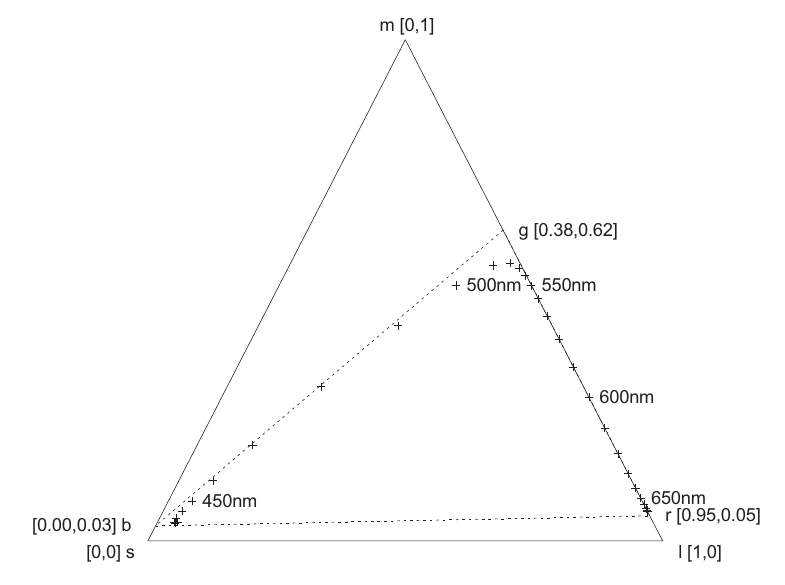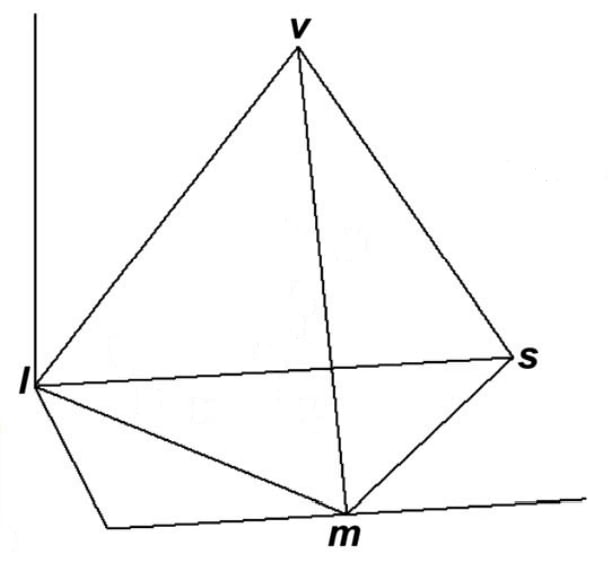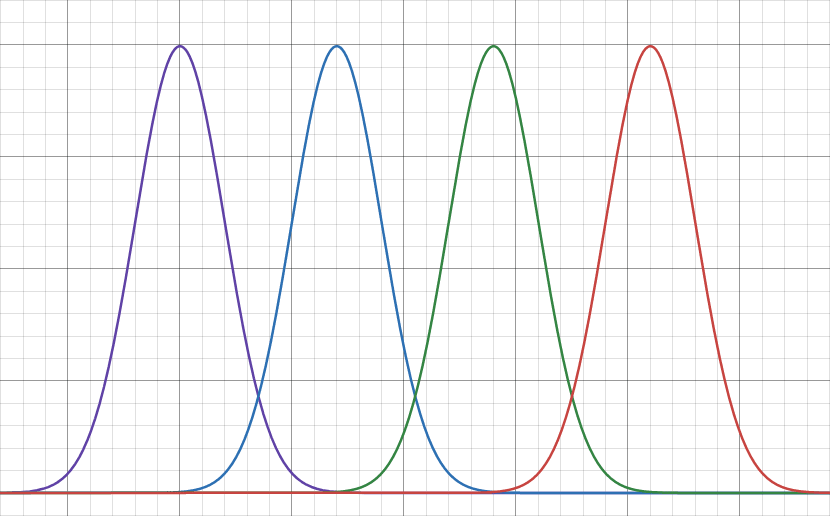Existing genetic engineering techniques can be used to significantly enhance human color vision, both in terms of private visual experience as well as perceptually.
Color Gamut Expansion
LMS color space represents the response of the three cone cells of the human eye, named after the wavelength of their relative peak responsivity (long, medium and short). Proteins called opsins are mostly responsible for this response.
Overlaps between these peaks makes resolving colors difficult, this is particularly problematic for M cones since their wavelength lies in between the other two.

These poorly designed absorption curves make about 30% of our gamut color space completely inaccessible under normal conditions.

To address this issue new opsin proteins must be generated and used to replace the current ones. These new proteins must possess curves that are well separated with means equally spaced between them. To design these new proteins techniques like directed evolution can be employed, alternatively a suitable alternative can be searched among their biological homologous.
In a recent study scientists were able to make a machine (a sort of advanced laser display) that can, to a certain degree, selectively stimulate individual cone cells within the retina; test subjects confirmed they could experience a novel color quale. Refining the responsivity curves of our opsin proteins would have the same effect, effectively adding up to a million new colors to our everyday experience.
Unfortunately germline engineering is necessary to implement this fix, as virtually all the cone cells in both our eyes need to be modified for this to work. Tissue engineering and retina transplant may make this genemod available to baseline humans in the medium-term future.
Dimensional Expansion
A completely new color can be added to our vision by adding a new opsin gene to our current set, making us tetrachromats. The common ancestor of vertebrates was a tetrachromat as are birds and other modern animals, with four distinct channels for conveying chromatic information, their color space is 4D.

The fourth color opsin for these animals lies in the ultraviolet. For humans such a protein must be carefully picked among existing ones (or else designed anew) since the human eye naturally blocks UV light. UV-A (320-400 nm) is likely the best candidate as a large part of it reaches the retina and there are animal uv opsins with mean responsivity at around 370 nm.
Gene therapy protocols have already been explored to add a new color in animal vision with successful results, while, to my knowledge, germline engineering has not been explored for this type of editing.

References
- Novel color via stimulation of individual photoreceptors at population scale
- Gene therapy for red–green colour blindness in adult primates
- A Locus Control Region Adjacent to the Human Red and Green Visual Pigment Genes